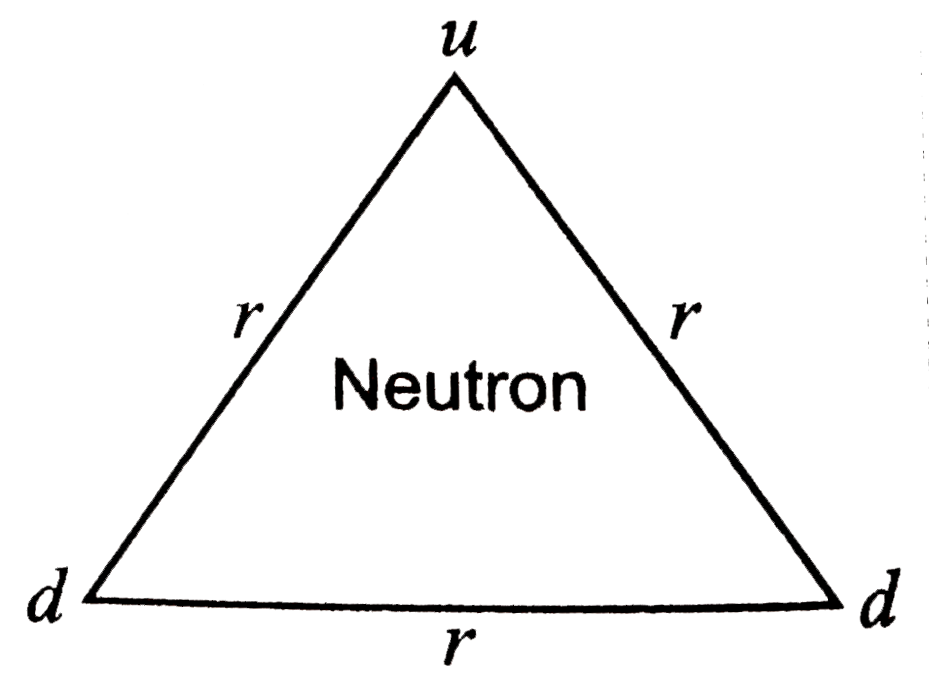Answer the following questions:
(a) Quarks inside protons and neutrons are thought to carry fractional charges [(+2/3)e,(−1/3)e]. Why do they not show up in Millikan’s oil-drop experiment?
Quarks are thought to be confined within a proton or neutron by forces which grow stronger if one tries to pull them apart. It, therefore, seems that though fractional charges may exist in nature, observable charges are still integral multiples of e.
Similar Questions
Answer the following questions:
(a) Quarks inside protons and neutrons are thought to carryfractional charges [(+2/3)e , (–1/3)e]. Why do they not show up in Millikan’s oil-drop experiment?
(b) What is so special about the combination e/m? Why do we not simply talk of e and m separately?
(c) Why should gases be insulators at ordinary pressures and start conducting at very low pressures?
(d) Every metal has a definite work function. Why do all photoelectrons not come out with the same energy if incident radiation is monochromatic? Why is there an energy distribution of photoelectrons?
(e) The energy and momentum of an electron are related to the frequency and wavelength of the associated matter wave by the relations:
E = h ν, p = λh
But while the value of λ is physically significant, the value of ν (and therefore, the value of the phase speed ν λ) has no physical significance. Why?
View SolutionWhich of the following charge (s) can exist on an oil drop (in Millikan's oil drop experiment)
View SolutionWhich of the following charge (s) can exist on an oil drop (in Millikan's oil drop experiment)
View SolutionAnswer the following questions with reference to Millikan.s oil drop experiment:
What is an atomiser ?
View SolutionAnswer the following questions with reference to Millikan.s oil drop experiment:
What is the use of an X-ray tube ?
View SolutionAnswer the following questions with reference to Millikan.s oil drop experiment:
What is the unique property shown by the charge of an oil drop ?
View SolutionIt is now believed that protons and neutrons (which constitute nuclei of ordinary matter) are themselves built out of more elementary units called quarks. A proton and a neutron consist of three quarks each. Two types of quarks , the so called 'up' quark, (denoted by U) of charge +(2/3) e and the 'down' quark (denoted by d) of charge (−1/3) e together with electrons build up ordinary matter. (Quarks of each other types have also been found which give rise to different unusual varieties of matter). Suggest a possible quark composition of a proton and neutron.
View SolutionIt is now belived that protons and neutrons (which constitude nuclei of ordinary matter) are themselves built out of more elementary units called quarks. A proton and a neutron consist of three quarks each. Two types of quarks, the so-called 'up' quark (denoted by u) of charges +23e, and the 'down' quark (denoted by d ) of charges (−13)e, together with electrons build up ordinary matter. (Quarks of other types have also been found which give rise to different unusual varieties of matter. ) Suggest a possible quark composition of a proton and neutron.
View SolutionIt is now believed that protons and neutrons (which consitude nuclel of ordinary matter) are themselves built out of more elementary units called quarks. A proton and a neutron consits os three quarks each. Two types of quarks , the so called 'up' quark, (denoted by U) of charge +(2/3) e and the 'down' quark (denoted by d) of charge (−1/3) e together with electrons build up ordinary matter. (Quarks of each other types have also been found which give rise to different unsual varieties of matter). Suggest a possible quark composition of a proton and neutron.
View Solution(a) In a quark model of elementary particles, a neutron is made of one up quarks [charge (2/3)e] and two down quarks [charges - (1/3)e].As∑etˆtheyhavea△configurationwiths≤n>hoftheorderof10^(-15) m. Calculate electrostatic potential energy of neutron and compare it with its mass 939 MeV.
(b) Repeat above exercise for a proton which is made of two up and one down quark.

View Solution
